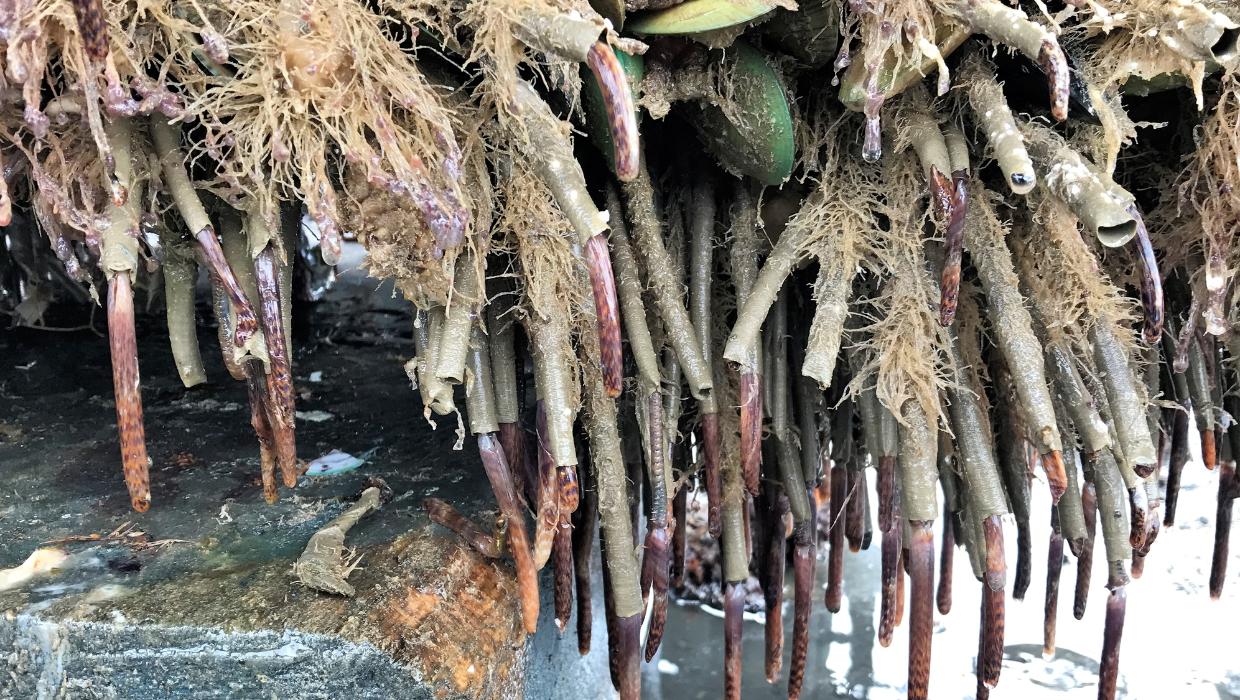New form sends your pest sightings direct to ORC’s Biosecurity team
Tuesday 8 July 2025

Have you seen a rook? What about Mediterranean fanworm?
Tuesday 8 July 2025

Have you seen a rook? What about Mediterranean fanworm?
The Otago Regional Council wants you to report these and other priority pests, should you see them in our region - and now there’s a new way to do it that makes sure all the right information lands directly in the ORC biosecurity team’s inbox.
The new online ‘report pests’ form is a quick way to alert our biosecurity team to priority pests or any potential biosecurity threats in the Otago region.
“This form has been designed to capture information about priority pests in Otago,” says Robert Win, ORC’s Biosecurity team leader.
“Priority pests are a significant environmental concern that have either not yet established, or not widely established and have the potential to cause substantial harm, such as Moth plant or the Freshwater Gold Clam.”
The form, which can be found on the ORC website, as well as on the priority pest pages, works on laptop and mobile, collects pest sighting details, precise location data, and other information for the biosecurity team to investigate.
People can still use ORC’s 0800 number (0800 474 082) to report pests, but emphasis will be on promoting citizen science and for the public to use the form. The benefits of using the form directly, rather than going through the ORC customer service team include:
• Information can be passed on in a timelier manner,
• More accurate pest descriptions and location data can be provided with the forms,
• Less double handling of information by ORC staff.
“Citizen science is a valuable way the public can help protect Otago’s environment,” says Mr Win. “Otago is home to many threatened and taonga species. We can help to protect these and the region’s wider indigenous biodiversity if we all work together, especially if Biosecurity staff have timely information on pest sightings and exact locations.”
The easy-to-use online form lets people upload photos and pin the exact location of the sighting. You can leave your contact details or choose to remain anonymous. The form doesn’t replace councils 0800 number but its handier as people can pinpoint exactly where they saw the pest.
|
Common Name |
Priority Pest in Otago |
|
African feather grass |
Yes |
|
African love grass |
Yes |
|
Asian Paddle Crab |
Yes |
|
Chilean needle grass |
Yes |
|
Horsetail Reed |
Yes |
|
Lagarosiphon |
Yes |
|
Spartina |
Yes |
|
Toxic algae |
Yes |
|
Wild Ginger |
yes |
|
Wilding conifers |
Yes |
|
Yellow Flag Iris |
yes |
|
Cape Tulip |
Yes |
|
Egeria |
Yes |
|
Giant hogweed |
Yes |
|
Hornwort |
Yes |
|
Japanese/Indian Knotweed |
Yes |
|
Mediterranean fanworm |
Yes |
|
Moth plant |
Yes |
|
Nassella tussock |
Yes |
|
Purple Loosestrife |
Yes |
|
Rooks |
Yes |
|
Rough horsetail |
Yes |
|
Spiny broom |
Yes |
|
Bennett's wallaby |
Yes (MPI) |
|
Caulerpa |
Yes (MPI) |
|
False tamarisk |
Yes (MPI) |
|
Freshwater gold clam |
Yes (MPI) |
|
Great Willowherb |
Yes (MPI) |